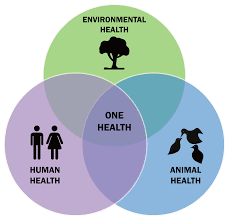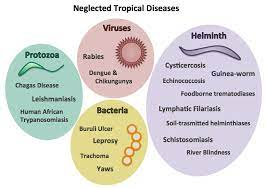Social Justice
Snakebite Envenoming
- 14 Mar 2024
- 9 min read
For Prelims: Snakebite Envenoming, National Action Plan for Prevention and Control of Snakebite Envenoming (NAP-SE), ‘One Health’ approach, World Health Organisation (WHO), Neglected Tropical Disease (NTD)
For Mains: Snakebite Envenoming, One Health Approach
Why in News?
Recently, the Ministry of Health and Family Welfare has launched a National Action Plan for Prevention and Control of Snakebite Envenoming (NAP-SE), under the ‘One Health’ approach.
What is the National Action Plan for Prevention and Control of Snakebite Envenoming (NAP-SE)?
- About:
- The NAP-SE provides a broad framework for management, prevention and control of Snakebite envenoming in India.
- This NAP-SE echoes the global voice of reducing the deaths due to snakebite envenoming by half and envisages all strategic components, roles and responsibilities of concerned stakeholders.
- The NAP-SE is a guidance document for the states/UTs and stakeholders to develop their own action plan, specific to their needs and aims at systematic reduction of snakebite envenoming risk through sustained availability of anti-snake venom, capacity building, referral mechanism and public education.
- Aim:
- To prevent and control snakebite envenoming in order to halve the numbers of deaths and cases of disability that it causes by 2030.
- To progressively reduce the morbidity, mortality and its associated complications in humans due to Snake bite.
- Strategic Actions:
- Human Health: The strategic action for human health component includes ensuring provision of anti snake venom at all health facilities, strengthening surveillance of snakebite cases and deaths in humans.
- Strengthening of emergency care services at District Hospitals/ CHCs including services for ambulances, institutionalisation of Regional Venom Centre’s and inter-sectoral coordination.
- Wildlife Health: The strategic action for wildlife health component includes education awareness, antivenom distribution, strengthening of the key stakeholders, systematic research and monitoring and snake venom collection and snake relocation.
- Animal and Agriculture Component: The strategic action for animal and agriculture component includes prevention of snakebites in livestock, community engagement etc.
- Human Health: The strategic action for human health component includes ensuring provision of anti snake venom at all health facilities, strengthening surveillance of snakebite cases and deaths in humans.
What is Snakebites Envenoming (SE)?
- About:
- Snakebite Envenoming (SE) is classified by the World Health Organisation (WHO) as a High-Priority Neglected Tropical Disease (NTD).
- SE is a potentially life-threatening disease that typically results from the injection of a mixture of different toxins (venom) following the bite of a Venomous Snake.
- It can also be caused by having venom sprayed into the eyes by certain species of snakes that have the ability to spit venom as a defence measure.
- Snakebite poses a significant daily health risk in rural tropical and subtropical regions of Africa, the Middle East, Asia, Oceania, and Latin America, particularly for the hundreds of millions of people in rural and peri-urban communities reliant on agriculture and subsistence activities for survival.
- Impact:
- Many snakebite victims, mostly in developing countries, suffer from long-term complications such as deformities, contractures, amputations, visual impairment, renal complications and psychological distress.
- Prevalence:
- In India, around 50,000 deaths occur of an estimated 3-4 million snake bites annually which accounts for half of all snakebite deaths globally.
- Only a small proportion of snake bite victims across countries report to the clinics and hospitals and actual burden of snake bite is grossly underreported.
- As per the Central Bureau of Health Investigation (CBHI) reports (2016-2020), the average annual frequency of snakebite cases in India is around 3 lakhs and about 2000 deaths occur due to snakebite envenoming.
- In India, around 90% of snake bites are caused by the 'big four' among the crawlers - common krait, Indian cobra, Russell's viper and saw scaled viper.
- In India, around 50,000 deaths occur of an estimated 3-4 million snake bites annually which accounts for half of all snakebite deaths globally.
- WHO’s Roadmap for SE:
- WHO launched its roadmap in 2019 with an aim to halve death and disability from snakebite by 2030.
- In order to create a sustainable market for antivenoms there is a need for a 25% increase in the number of competent manufacturers by 2030.
- WHO has planned a pilot project to create a global antivenom stockpile.
- Integrating snakebite treatment and response into national health plans in affected countries, including better training of health personnel and educating communities.
- WHO launched its roadmap in 2019 with an aim to halve death and disability from snakebite by 2030.
- Indian Initiatives:
- Much before the WHO roadmap was launched, researchers from Indian Council of Medical Research (ICMR) started community awareness and health system capacity building from the year 2013.
- In alignment with WHO's Snakebite Envenoming Strategy and the United Nations' Sendai Framework for Disaster Risk Reduction, India ratified a National Action Plan in 2015 to combat this issue.
What is the One Health Concept?
- One Health is an approach that recognises that the health of people is closely connected to the health of animals and our shared environment.
- One Health’ vision derives its blueprint from the agreement between the tripartite-plus alliance comprising the Food and Agriculture Organization of the United Nations (FAO), the World Organisation for Animal Health (OIE).
- It’s purpose is to encourage collaborations in research and sharing of knowledge at multiple levels across various disciplines like human health, animal health, plants, soil, environmental and ecosystem health in ways that improve, protect and defend the health of all species.
What are Neglected Tropical Diseases (NTDs)?
- NTDs are a group of infections that are most common among marginalized communities in the developing regions of Africa, Asia and the Americas.
- They are caused by a variety of pathogens such as viruses, bacteria, protozoa and parasitic worms.
- NTDs are especially common in tropical areas where people do not have access to clean water or safe ways to dispose of human waste.
- These diseases generally receive less funding for research and treatment than malaises like tuberculosis, HIV-AIDS and malaria.
- Examples of NTDs are: snakebite envenomation, scabies, yaws, trachoma, Leishmaniasis and Chagas disease etc.
Read more: Snake Venom Neutralising Antibody
UPSC Civil Services Examination, Previous Year Question (PYQ)
Prelims
Q. Which of the following are the reasons for the occurrence of multi-drug resistance in microbial pathogens in India? (2019)
- Genetic predisposition of some people
- Taking incorrect doses of antibiotics to cure diseases
- Using antibiotics in livestock farming
- Multiple chronic diseases in some people
Select the correct answer using the code given below.
(a) 1 and 2
(b) 2 and 3 only
(c) 1, 3 and 4
(d) 2, 3 and 4
Ans: (b)
Mains
Q. Can overuse and free availability of antibiotics without Doctor’s prescription, be contributors to the emergence of drug-resistant diseases in India? What are the available mechanisms for monitoring and control? Critically discuss the various issues involved. (2014)








